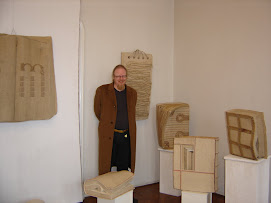 I still haven't gotten back in a proper routine after the Nordic Americanist events over the last two weeks, but every mill needs its grist, not least the publication one. Therefore it is gratifying to have two new book chapters out as a result of 2006's conference going!
I still haven't gotten back in a proper routine after the Nordic Americanist events over the last two weeks, but every mill needs its grist, not least the publication one. Therefore it is gratifying to have two new book chapters out as a result of 2006's conference going!
Space Haunting Discourse is a volume out from Cambridge Scholars Press, edited by Maria Holmgreen Troy and Elizabeth Wennö from Karlstad U. Maria and Elizabeth put on two excellent interdisciplinary conferences in 2004 and '06 and I participated in both of them. The chapter I have in the fresh volume is on novels about Big Sur, California by Henry Miller, Jack Kerouac and Richard Brautigan. Maria and Elizabeth have written a comprehensive and generous introduction to the volume which is available as a PDF from the publishers' web site. They give the following description of my piece:
Presence and absence are also features of Bent Sørensen’s “Representations of Big Sur in Late Modernist and Early Postmodernist American Writing.” The textual referent is the actual geographical Californian Big Sur, inscribed with meanings by three writers in such a way that it is rendered absent and instead emphasises loss and disillusion. In effect, his analysis supports David Harvey’s argument that the genius loci, the place of special significance to the individual and the community, “is open to contestation, both theoretically (as to its meaning) and concretely (as to how to understand a place)” (309). Henry Miller, Jack Kerouac and Richard Brautigan all wrote prose about Big Sur, and Sørensen demonstrates how this locus haunts these texts in three significantly diverging ways: Miller’s locus amoenus, Kerouac’s tremens, and Brautigan’s topos.My other new book chapter is an analysis of Uncle Sam as an American icon. It is published in a volume edited by Ari Helo of the Helsinki Renvall Institute, titled Communities and Connections: Writings in North American Studies. That chapter will be integrated in my forthcoming book American Icons: Transgression and Commodification.
Within the short span of seven years, the potential of Big Sur as a locus representing ideas and emotions has been transformed into a fully textualised topos, which can only serve as a vehicle for pastiche and postmodern parody of Brautigan’s modernist precursors’ anxieties. His text is haunted by the intertextual ghosts of Kerouac’s and Miller’s gender and racial values, which are parodied by Brautigan’s incongruous collection of beatnik womanisers and exploiters of both land and Native American (and Confederate) heritages. At the end of the essay Sørensen quotes J. Gerald Kennedy’s remarks on the distinction between a subjective concept of place and a “textual, writerly image”: the difference between the two is not a structural one of “real and fictive” but “between textual scenes and the symbolic experiences of place which they inscribe.” Taking it one step further we could say that Sørensen’s analysis of modernist and postmodernist inscriptions also reflect the epistemological shift in theory as well as the shift in literature from the crypto-religious impulse of modernism to the playful linguistic preoccupation of much postmodernism.




No comments:
Post a Comment